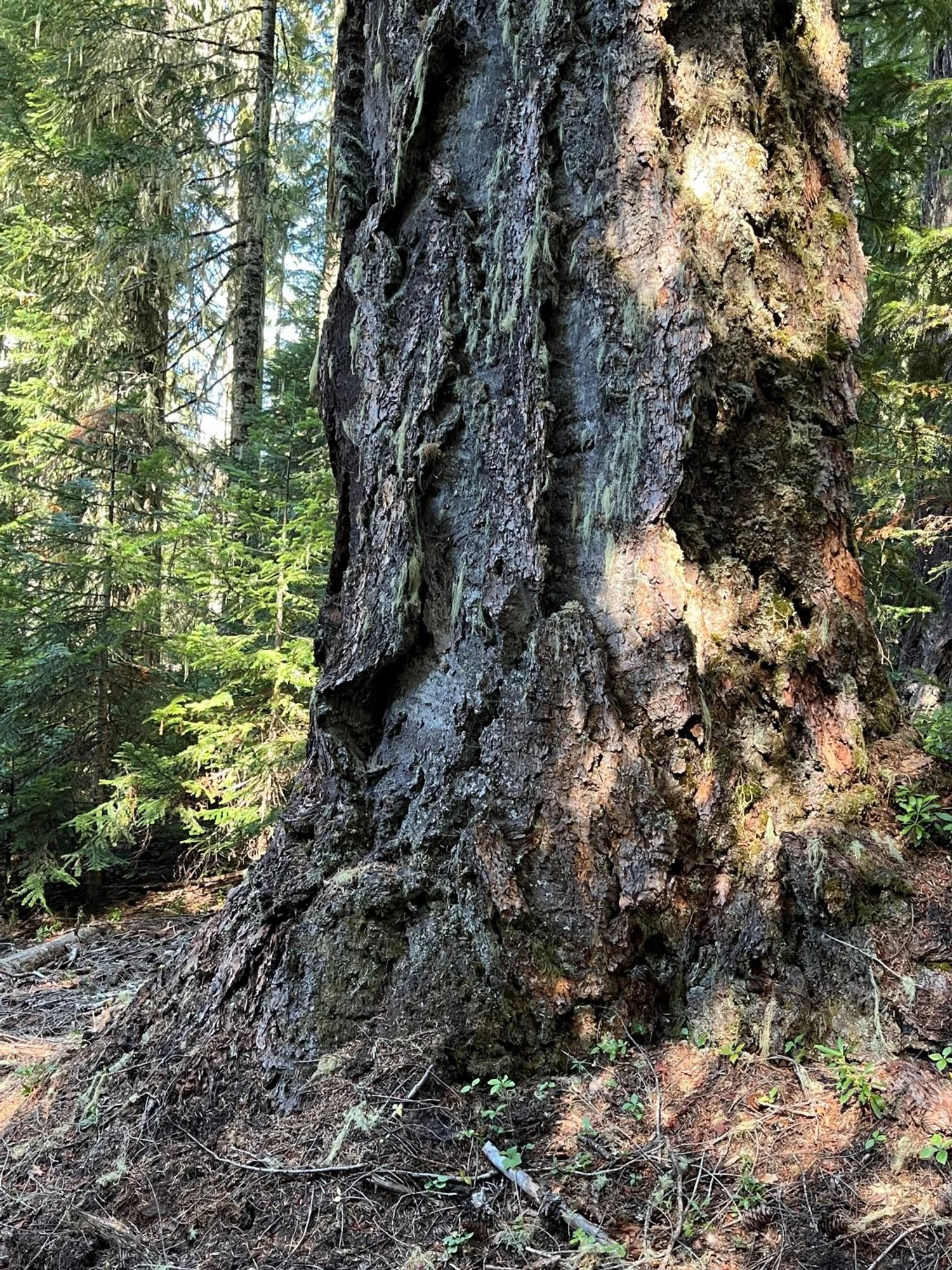
66. Duffy Lake
Summary
Length 3 1/3 miles one way
Difficulty Moderate
Season Late spring to autumn
Elevation range 4,040 – 4,820 feet
Human imprint High (hikers, backpackers, and equestrians)
Information Willamette National Forest (Detroit Ranger District)
Primary old growth feature
Douglas-fir old growth in the High Cascades.
Description
The trail to Duffy Lake immediately enters wonderful old forest featuring stout, cinnamon-barked Douglas-fir. Beautiful Duffy Lake is an easily reached gateway destination, and for that reason has long been overused. To remedy the issue, a Central Cascades Wilderness Permit is now required for legal entry to the area from June 15 through October 15. The permit must be acquired online (Recreation.gov) and is not available at the trailhead. A Northwest Forest Pass, or equivalent, is also required for trailhead parking.
The Duffy Lake Trail (3427) stretches from the trailhead all the way to the lake. Huge Douglas-fir greet hikers almost from the first step up the trail, and dominate over the first mile and a quarter. Western hemlock and Pacific silver fir co-occur in the understory, and occasionally reach the overstory. The forest becomes much younger after that, and transitions into a higher-elevation forest type mostly comprised of mountain hemlock and Pacific silver fir. Large Douglas-fir, western white pine, Engelmann spruce, and mountain hemlock are infrequently sprinkled in amidst the younger forest.
The Duffy Lake Trail intersects several other trails along the way, including an alternative access trail from the Big Meadows Horse Camp about a quarter mile from the trailhead. Hikers can also start from the Horse Camp, adding another mile or so of old growth and two miles total each way to the hike. Near the junction with the Turpentine Trail, the Duffy Lake Trail begins a route parallel to the North Santiam River, and then crosses the river after a mile. The ultimate headwaters of the North Santiam River are nearby, though the riverbed is completely dry in later summer due to the porous ash soil and lava-rock substrate.
Duffy Lake offers a jumping-off point for single-day or multi-day exploration of nearby lakes and other attractions of the Mount Jefferson Wilderness. Hikers won’t find much further old growth though. The Booth Fire (B & B Complex, 2003) burned through much of the Wilderness to the east, burning itself out near Duffy Lake. Snags from the fire and recovering forest can be seen across Duffy Lake on the south-facing slopes of Duffy Butte.
30 years of change
Little change to the forest. The relatively new (begun in 2021) wilderness permit system is reducing crowds and limiting visitor damage.
How to get there
From Highway 22, turn east onto Big Meadows Road (FR 2267) approximately 5 ½ miles north of the junction with Highway 20 (25 ½ miles south of Detroit.) Follow single-lane, paved Big Meadows Road for 2.6 miles, then turn left on a rough-surfaced, but easily drivable road to the trailhead less than ½ mile later.

Classic Douglas-fir old growth
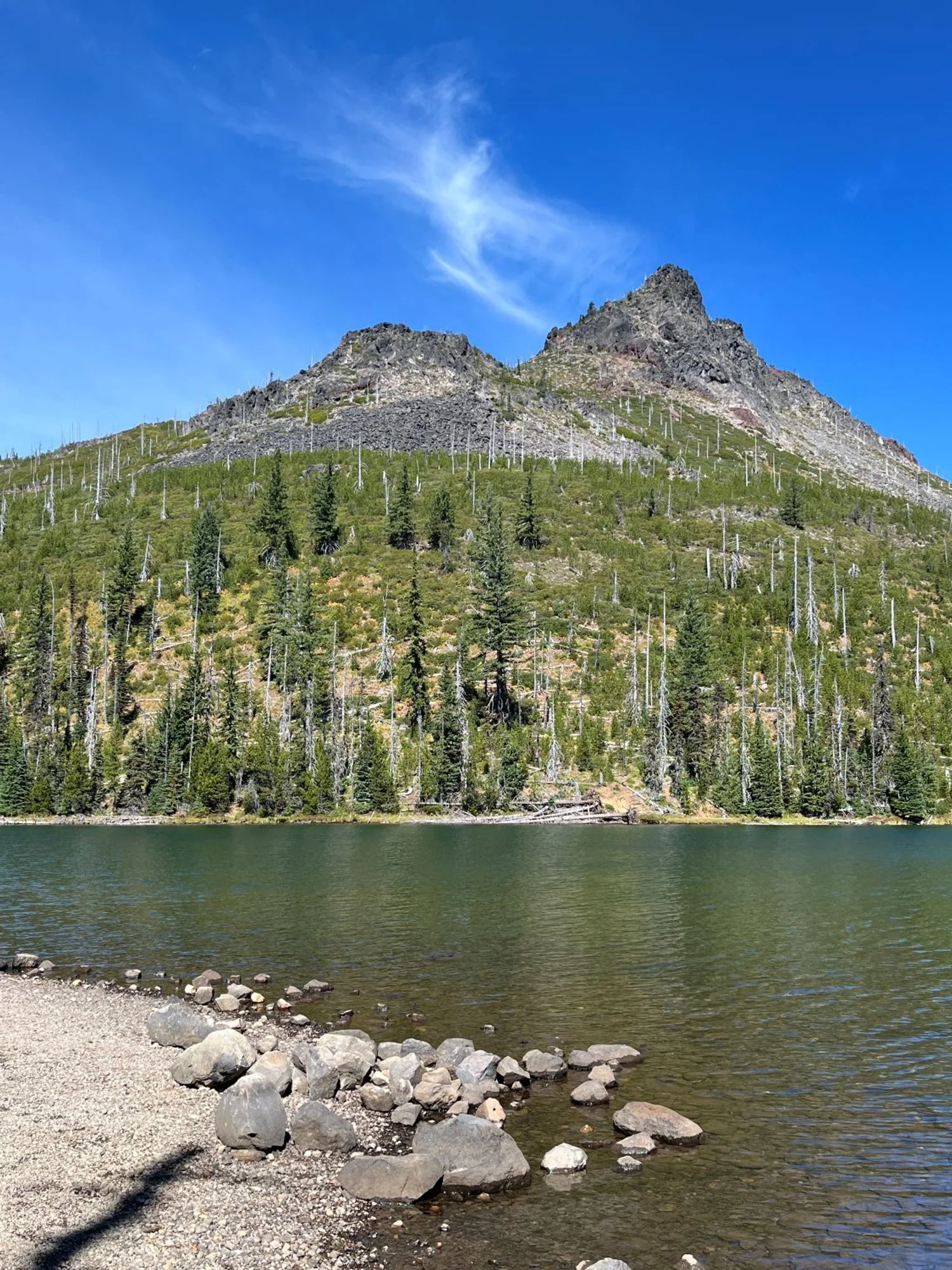
Duffy Lake in front of Duffy Butte
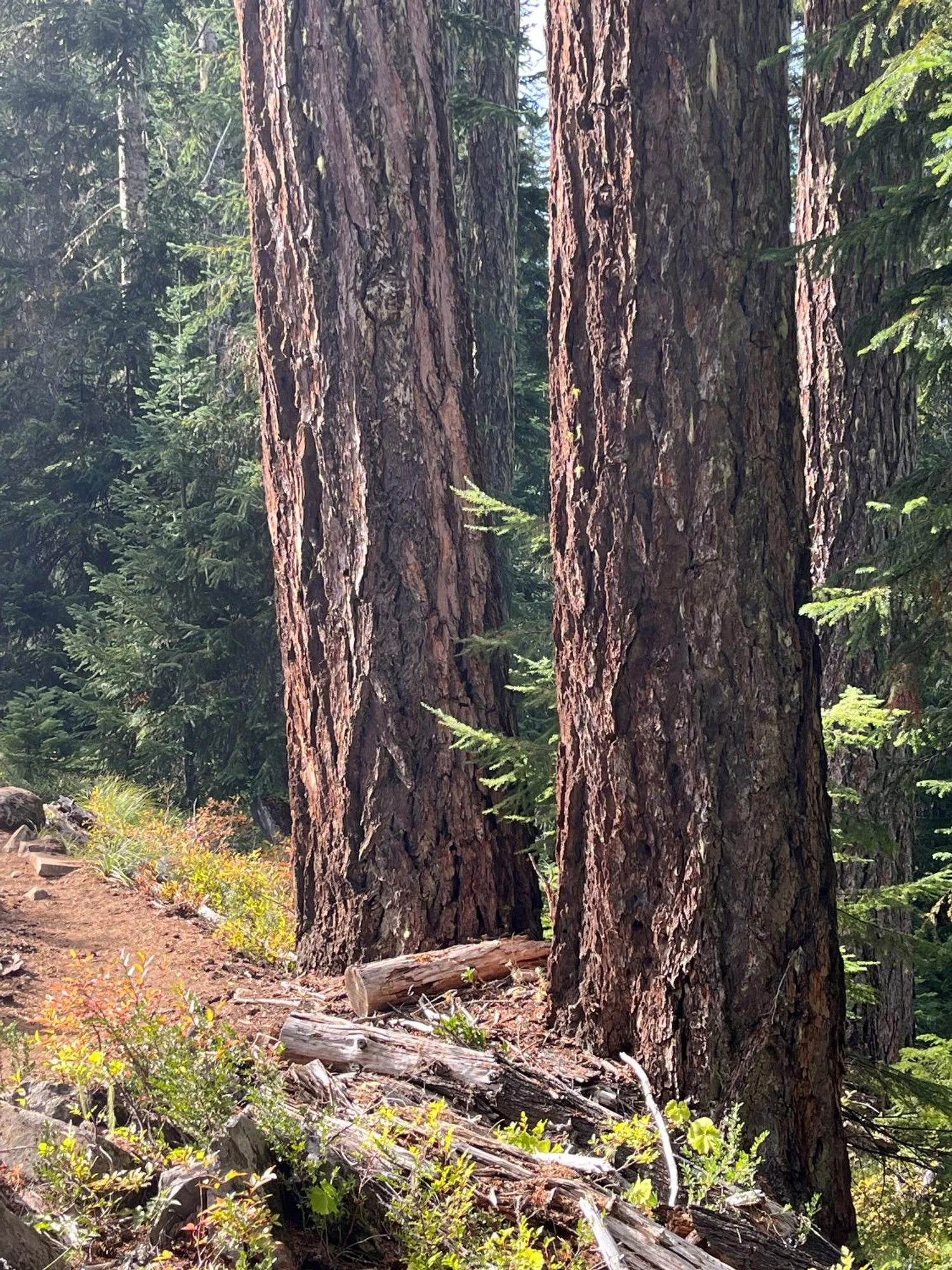
Giant Douglas-fir
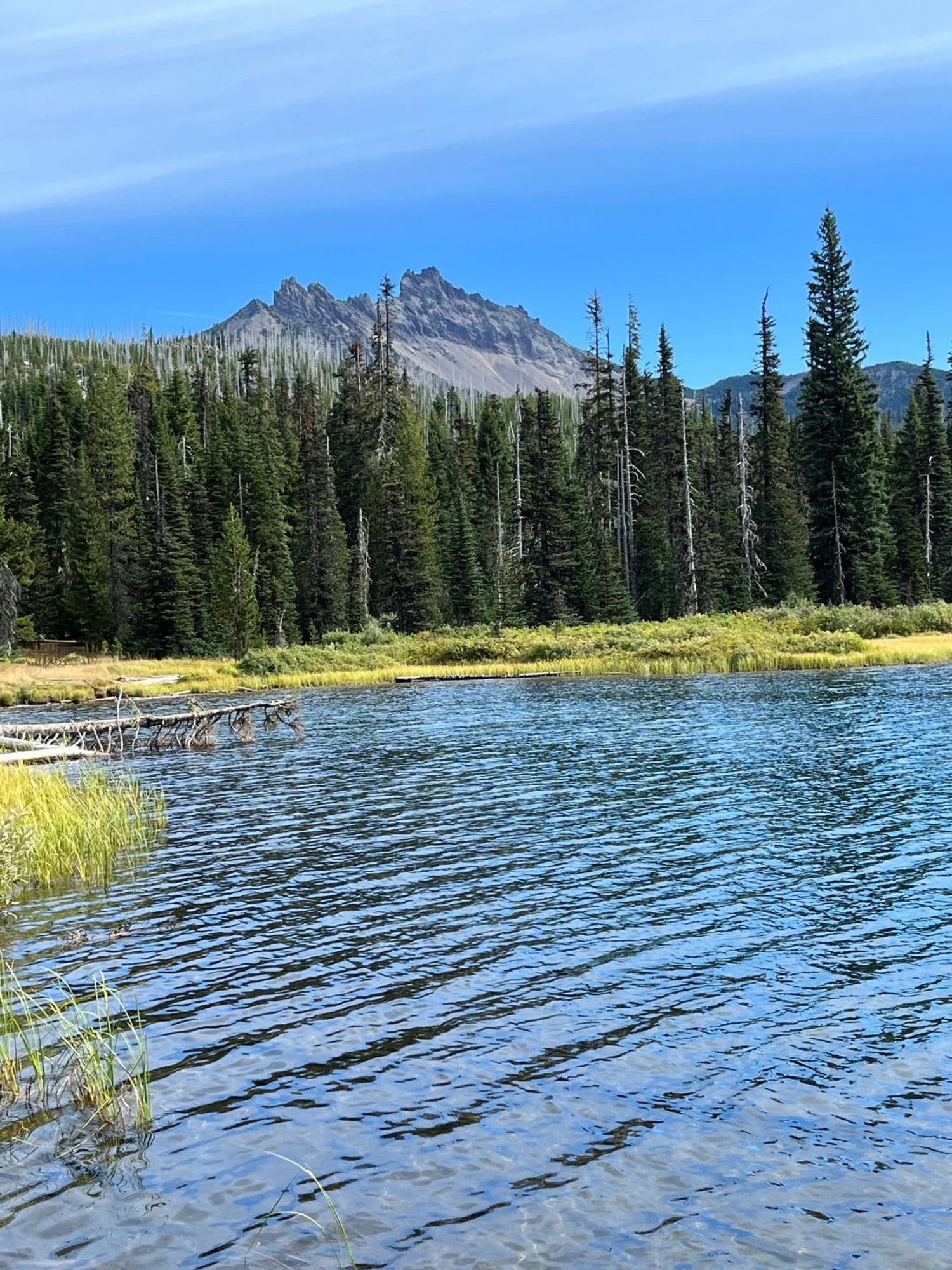
Three Fingered Jack behind Duffy Lake
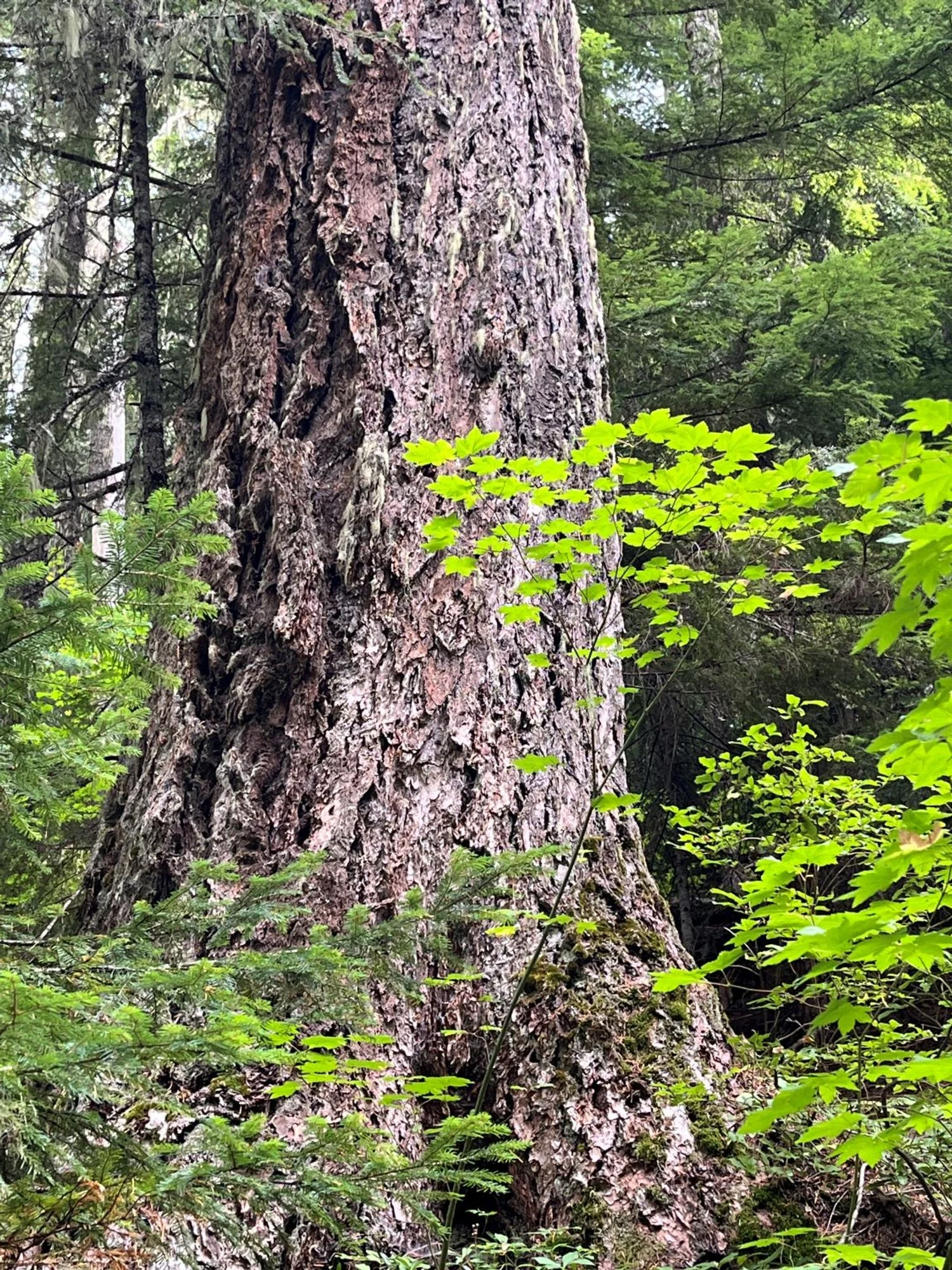
Ancient Douglas-fir
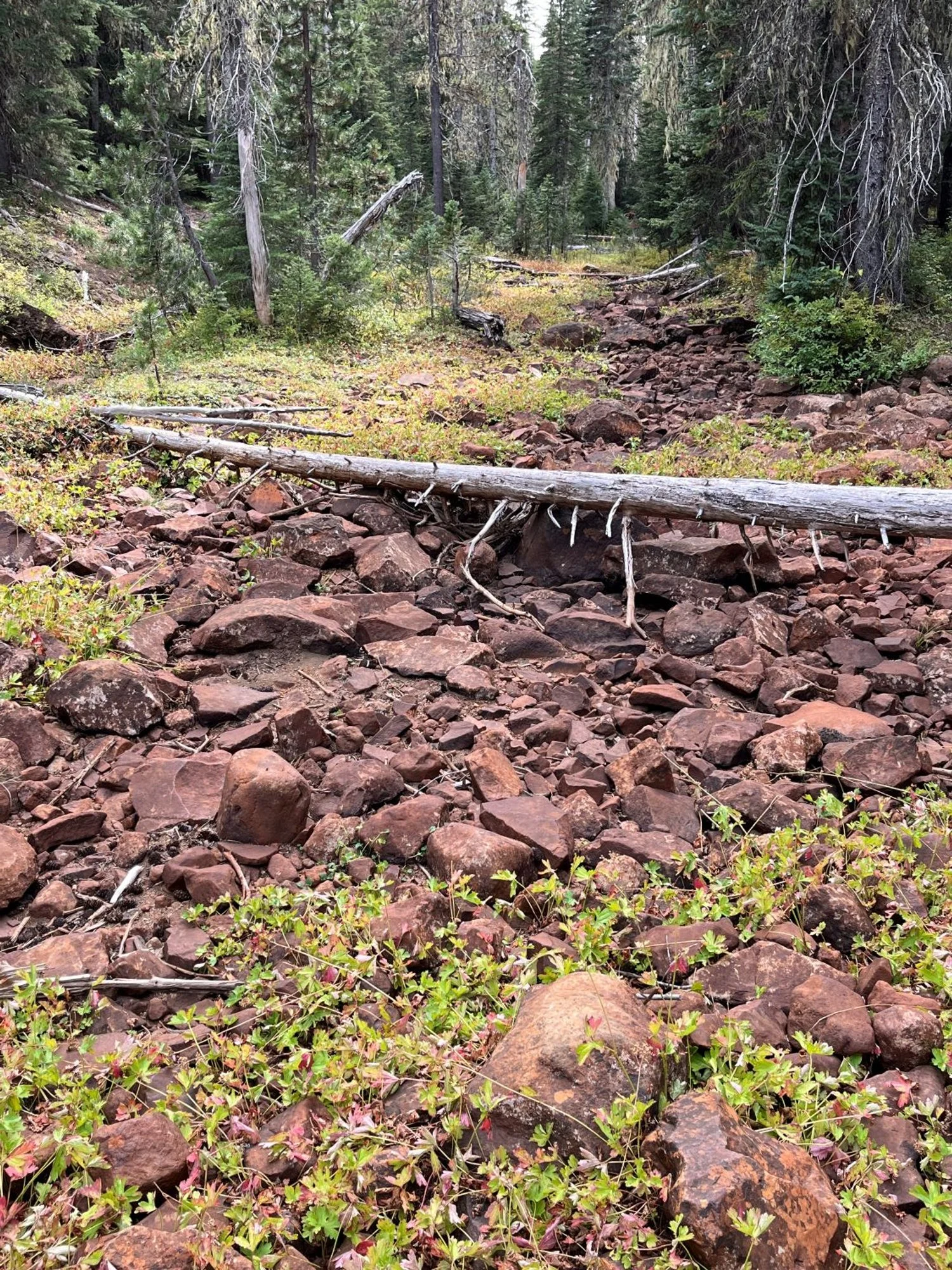
North Santiam headwaters in late summer

Huge Douglas-fir
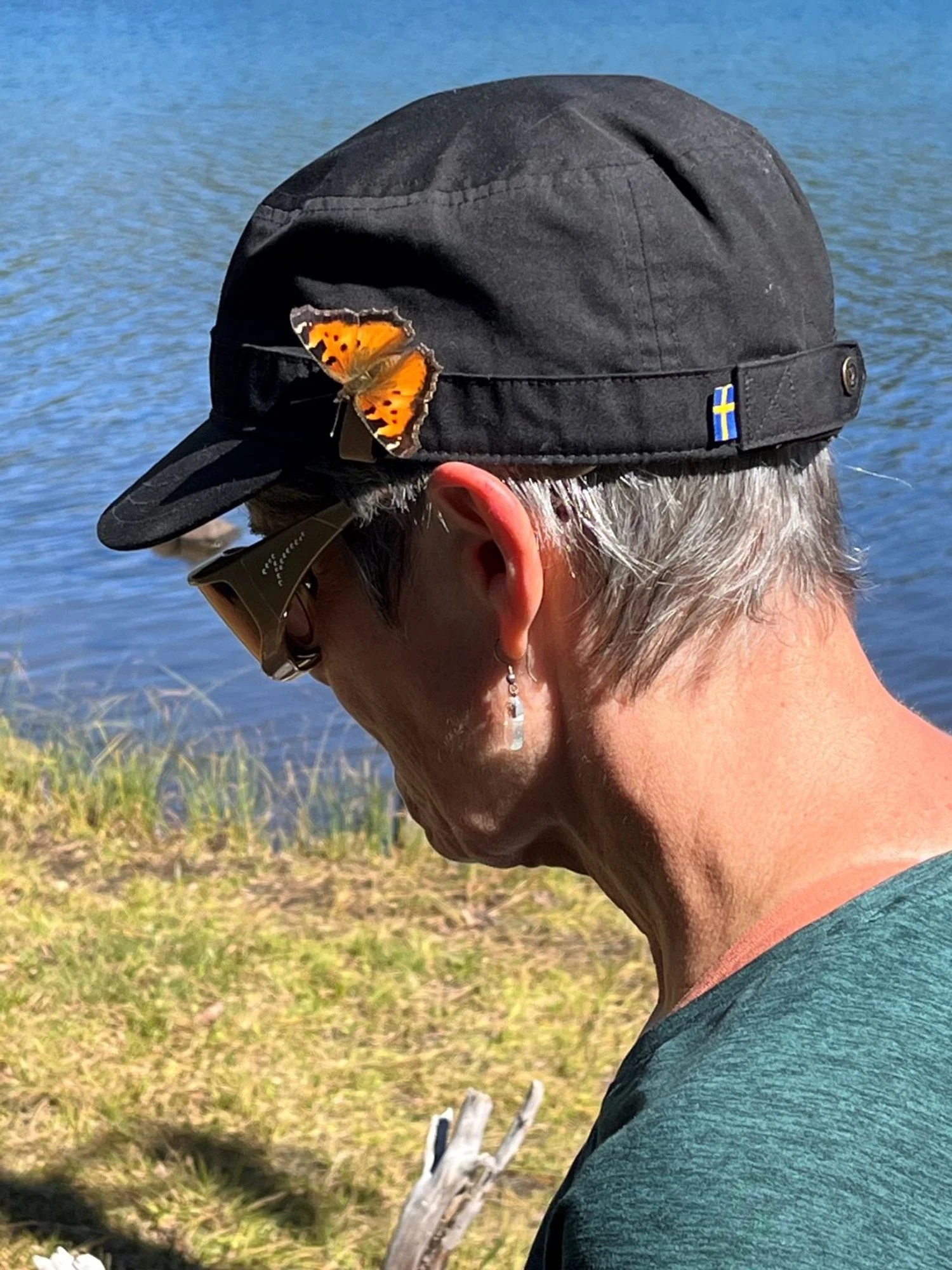
California tortoiseshell and Diane by Duffy Lake

Old western hemlock
